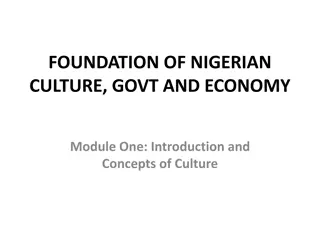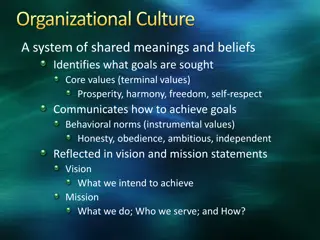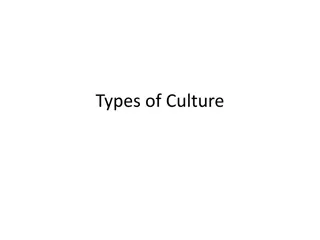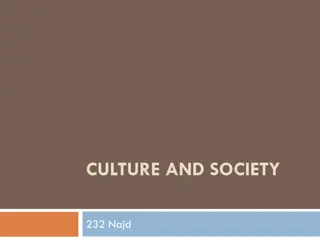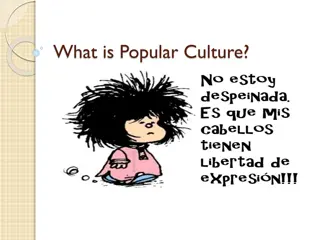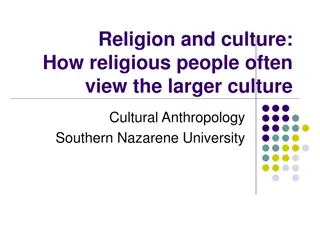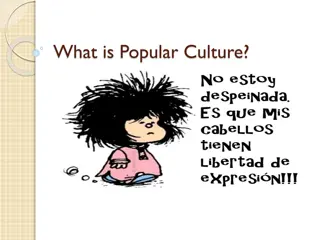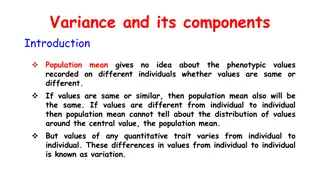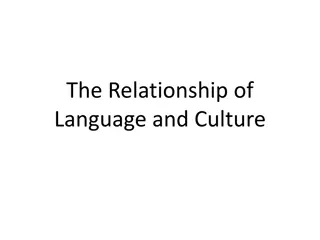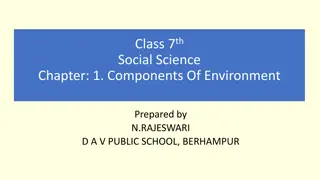Understanding Culture: Definition, Components, and Variations
Culture encompasses the entire way of life for a group of people, comprising material and symbolic elements passed down through generations. Categories include material and symbolic culture, with aspects like beliefs, customs, gestures, language, norms, and artifacts shaping cultural identity. Language plays a crucial role in communication and perception, reflecting the Saphir-Whorf hypothesis. Norms and values guide behavior within a culture, while types of social control range from folkways to taboos and laws.
Uploaded on Sep 28, 2024 | 0 Views
Download Presentation

Please find below an Image/Link to download the presentation.
The content on the website is provided AS IS for your information and personal use only. It may not be sold, licensed, or shared on other websites without obtaining consent from the author. Download presentation by click this link. If you encounter any issues during the download, it is possible that the publisher has removed the file from their server.
E N D
Presentation Transcript
CULTURE : DEFINITION, COMPONENTS, HYPOTHESIS, VARIATIONS By: Dr. Neni Kurniawati, M.Hum. Dr. Jumanto, M.Pd.
What is culture? The entire way of life for a group of people (including material and symbolic elements) A lens through which one views the world It is passed from one generation to the next, bequeathed from ancestors interaction with other people It is what makes us human
Catagories Material culture Any physical object to which we give social meaning. It includes objects associated with a cultural group, such as tools, machines, utensils, buildings, and work. Symbolic culture The ideas associated with a cultural group It includes ways of thinking (beliefs, values, and assumtions) and ways of behaving (norms, interactions, and communication)
Some of Culture Aspects Belief Customs Gesture Facial expression Words (language) Norms Artifacts etc
Language A system of communication using vocal, sounds, gesttures, and written symbols, is the most significant component of culture to communicate Language shapes not only our communication but our perceptions of how we see things as well Language structures thought, and that ways of looking at the world are embedded in language (Saphir-Whorf hypothesis
Norms Values -> shared beliefs about what a group considers worthwhile or desirable Values guide the creation of norms Norms -> the formal and informal rules regarding what kinds of behavior are acceptable and appropriate within a culture Norms : law, social, religion Norms overn our behavior
Types of Social Control Folkway -> a loosely enforced norm that involves common customs, pratices, or procedures that ensure smooth social interaction and acceptance More -> a norm that carries greater moral significance (norms of morality) Taboo -> a norm engrained so deeply that even thinking about violating it evokes strong feelings of disgust, horror, or revulsion for most people Law
Social Control and Sanctions Sanctions -> positive or negative reactions to the ways that people follow or disobey norms, including rewards for conformity and punishments for norm violators. Sanctions help to establish social control, the formal and informal mechanism used to increase conformity to values and norms and thus increase social cohesion.
Ethnocentrism Judging another culture solely by the values and standards of one s culture Concern to language, behavior, customs, and religion Define cultural identity Ethnocentric individual believe that they are better than other individuals
Ethnocentrism Examples: - European Imperialism - The Mandate of Heaven - Nazi Germany
Stereotype A thought about specific types of individuals or certain ways of doing things, but that belief may or may not reflect reality. Etymology: solid impression Reflect expectations and beliefs about the characteristics of members of groups perceived as different from one s own. What people think of others. Serve cognitive functions on an interpersonal level and social functions on an intergroup level
Stereotype common stimuli or socialization The biggest stereotypes: racial. Sexual, and gender remarks Common in various cultural media, e.g. Hollywood movies - Latin Americans: gang members, illegal immigrants, house maid, etc. - Nigger: ? - Chinese: ?
Culture Stereotype All white Americans are obese, lazy, dim-witted, friendly, generous, arrogant, etc All Arabs and Muslims are terrorists Italian and French people are the best lovers All Jews are greedy All Asians are good in math, business
Prejudice Represents the emotional response The affective component of intergroup attitudes People create stereotypes to justify ingroupactions towards outgroup. Example: 1. Justification or ignorance 2. unwillingness to rethink one s attitudes and behavior 3. Preventing some people entering some fields or activities
Discrimination The behavioral component of prejudicial reactions Refers to actions E.g.: American to Nigger - Chinese to Malay
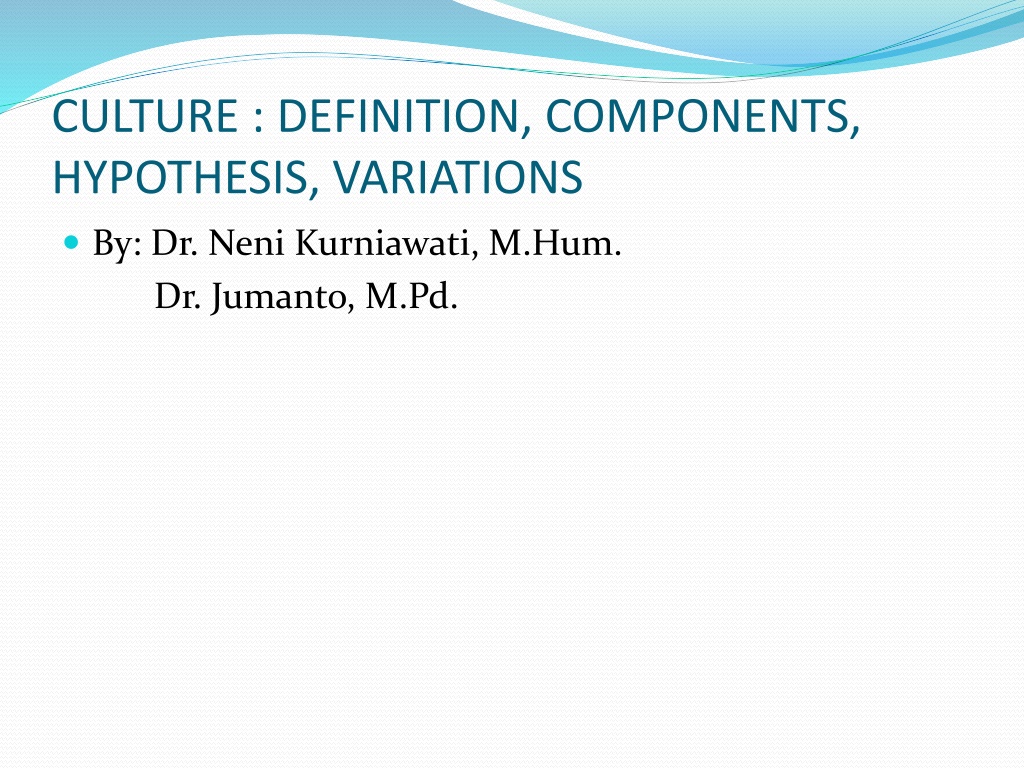



![Importance of Rock v. MWB [2018] UKSC 24 as Explained by Lord Sumption](/thumb/193348/importance-of-rock-v-mwb-2018-uksc-24-as-explained-by-lord-sumption.jpg)


